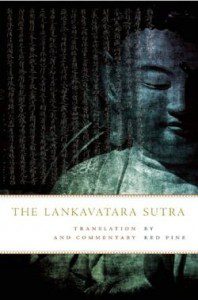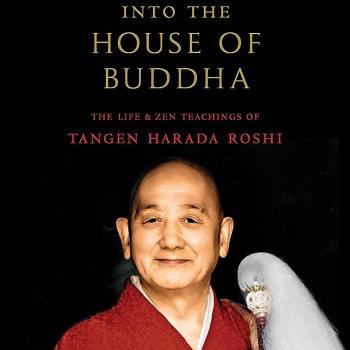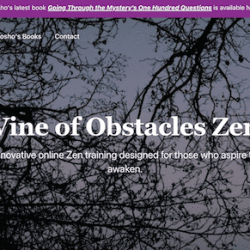 I have here the Laṅkāvatāra in four fascicles which I now pass to you. It contains the essential teaching concerning the mind-ground of the Tathagata, by means of which you lead all sentient beings to the truth of Buddhism.
I have here the Laṅkāvatāra in four fascicles which I now pass to you. It contains the essential teaching concerning the mind-ground of the Tathagata, by means of which you lead all sentient beings to the truth of Buddhism.
So the Indian transmitter of Zen to China, Bodhidharma, said to the second ancester, Huike.
So the story goes.
Then for a couple hundred years, the Laṅkāvatāra was the struggling lineage’s main piece of literature, and handing on the Bodhidharma text was reputedly part of the transmission from one generation to the next. So much so that Laṅkāvatāra School was a synonym for Zen.
So, hey, if our ancestors were into it big for that long, it might have an important meaning still.
But so far we’ve only had a rather rough translation by D.T.Suzuki. Now a rendering by Red Pine (well known for his wonderful translations of the Heart and Diamond Sutra that include important selections of commentaries – really the most important texts for the study of either of these sutras) will come out in January, 2012. Click here for a pre-order.
Red Pine gives us about a page of notes (translation alternatives, explanations of key phrases, bits of commentary) for each page of text. Yes, it is a serious book at a time when most publishing houses are into dharma-lite rather than dharma-light.
In my view, it is important that a good-sized group of modern practitioners actually study the ancients so that we don’t just make up this Zen thing here and now in a way that meets our contemporary neediness while being disconnected from past practitioners and uncaring about those in the future. With this translation, Red Pine and the good folks at Counterpoint continue doing a great service to us all.
So if you’re of the study-the-ancients ilk, this text is just your cup of tea. You might find a few sips quite satisfying.
The cup of tea and the sips, says Red Pine, summarize the teaching of the sutra:
The cup of tea in this case is the Buddha’s teaching that traces the universe to our awareness, be it mundane or metaphysical, back to our mind. This is the cup into which this sutra is poured…. Having put this cup of tea into our hands, the Buddha then asks us to taste the tea, to experience [personal self-realization] for ourselves.
The teaching is of the Mind Only or Practice Vehicle approach that succeeded the teaching of Nagajuna and his emptiness-oriented dialectics – not A, not B, not both, not neither. A few hundred years of that and people were ready to move on. Too many headaches and 1800 years to go before they could get a couple ibuprofen.
Red Pine gives a warm and friendly – and nonheadache inducing – introduction and says:
Just as the Diamond Sutra teaches detachment from dharmas, and the Heart Sutra teaches the emptiness of dharmas the Laṅkāvatāra teaches the non-projection of dharmas, that there would be no dharmas to be empty or to be detached from if we did not project them as existing or not existing in the first place.
Many sutras begin with a bodhisattva asking a question and then the Buddha or his representatives, Buddha-designees, go about responding to it.
This sutra has hundreds of questions! Here are three of the four chapter titles: “Mahamati’s Question,” “More Questions,” and “Final Questions.”
For example, the bodhisattva Mahamati (Great Wisdom), asks,
Where does liberation lead/who is bound and who is freed/ what are the realms of meditation/ why are are there three paths?
These are counted as just one of 108 questions that form just one chapter (there aren’t really 108, of course, but many more or a few less depending on how you count).
Mahamati is like a kid in stream-of-consciousness-question mode. He also asks,
Why are there wind and clouds in the sky/ why do memory and insight exist/ why are there trees and forests/ why are there grasses and vines?
The Buddha patiently responds to Mahamati, stressing the need for self-realization to an extent that is surprising and quite out-of-tune with much of the contemporary conversations about the dharma in Soto Zen and in most other lineages.
As such, this sutra is a the ideal antidote for the sickness of our age.
Practice suggestions: Read this text slowly! Like Soto-style kinhin (walking meditation), it isn’t about getting anywhere. Look at just a sentence or a paragraph at most in one sitting.
Then as the sutra suggests, “…reflect on this in your practice.” Sutra study is not an intellectual exercise apart from sitting, standing, and walking. Take up the sutra in the activities of your life, in the moment-by-moment movements of body, speech, and thought.
And stay in touch.












